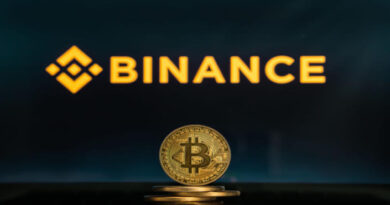Bitcoin, Ether flat; altcoins drop amid FTX liquidation
Bitcoin dipped on Monday morning in Asia to trade at around US$26,500. Ether also moved lower but stayed above its US$1,600 support level.
Most other top 10 non-stablecoin cryptocurrencies dropped, with Toncoin leading the losers with a slide of over 4%.
Bankrupt crypto exchange FTX received court approval last week to sell its crypto holdings of around US$3.4 billion, which could add to the selling pressure in the crypto market — especially altcoins — for the rest of the year.
U.S. stock futures edged up as investors await the Federal Reserve’s interest rate decision this week.
Wall Street closed lower on Friday, as mixed economic data in the U.S. moderated the investor’s risk appetite.
Bitcoin, Ether dip; selling pressure from FTX liquidation
Bitcoin edged down 0.18% in the last 24 hours to US$26,492.52 as of 07:30 a.m. in Hong Kong and went up 2.60% for the week, according to CoinMarketCap data.
The world’s largest cryptocurrency reached US$26,840.50 on Friday, the highest price since August 17.
Ether dipped 0.87% to US$1,619.94 and traded flat for the week with a 0.18% uptick.
Most other top 10 non-stablecoin cryptocurrencies booked losses in the past 24 hours. Binance’s BNB token was the only exception, rising 0.66% to US$216.23 while adding 1.80% for the week.
Despite the uptick in BNB prices, the world’s largest crypto exchange faces mounting regulatory challenges.
The firm’s U.S. affiliate Binance.US has laid off one-third of its staff and saw its Chief Executive Officer Brian Shroder leave the company last week, citing the U.S.
Securities and Exchange Commission’s (SEC) “aggressive attempts to cripple” the crypto industry.
The exchange also lost its legal and risk executives last week, according to the Wall Street Journal.
The crypto market is facing pressure from the liquidation of FTX, which plans to sell its US$3.4 billion worth of crypto assets by the end of 2023.
The bankrupt exchange’s top three crypto holdings are Solana (US$1.162 million), Bitcoin (US$560 million) and Ether (US$192 million).
FTX said it will gradually sell the holdings with a US$100 million weekly cap to avoid a negative impact on crypto prices, but this limit could expand to US$200 million upon approval from two committees representing FTX customers.
Sales of this size are destined to have an impact,” wrote blockchain research firm K33 on Friday.
Especially altcoins with limited liquidity are exposed, making it vital for altcoin traders to maintain comprehensive oversight of FTX’s holdings.”
The ongoing Bitcoin and Ether exchange-traded fund (ETF) applications in the U.S. could also be contributing to the underperformance of altcoins, said Justin d’Anethan, head of Asia-Pacific business development at Belgium-based crypto market maker Keyrock.
This is probably led by investors betting on ETFs becoming a thing -at some point in the future — and not wanting to miss out. Conversely, altcoins that are still at risk of being labelled as ‘securities’ aren’t benefitting from the same enthusiasm,” said d’Anethan.
The total crypto market capitalization dipped 0.73% in the past 24 hours to US$1.05 trillion, while trading volume dropped 12.08% to US$17.53 billion.
U.S. stock futures moved up as of 09:30 a.m. in Hong Kong, after Wall Street closed lower on Friday, with Nasdaq Composite leading the losers with a 1.56% slide.
The three major U.S. indexes closed the week mixed, with the S&P 500 and Nasdaq booking losses while the Dow Jones Industrial Average edging up 0.12%.
Most main stock indexes in Asia went lower on Monday morning.
China’s Shanghai Composite, Hong Kong’s Hang Seng and South Korea’s Kospi all logged losses, while Japan’s stock market is closed due to a public holiday and will return on Tuesday.
Wall Street’s Friday slide was spearheaded by major tech corporations including Nvidia Corp., Meta Platforms Corp. and Adobe Inc., which all closed the day over 3.5% lower.
Technology’s’ slide coincided with a Reuters report on Friday stating that TSMC, a Taiwan-based semiconductor manufacturer that provides chips to companies like Apple, had told its suppliers to delay delivery of high-end chip-making equipment due to concerns over customer demand.
Meanwhile, the U.S. economic data on Friday sent mixed messages to the market. The U.S. industrial production rose 0.4% by month in August.
Although the reading was held back by a 5% drop in the output of motor vehicles and parts, it still beat the analysts’ expectation of 0.1%.
The rebound in industrial production followed the August consumer price index (CPI) release last week that showed the core CPI — the Fed’s favored inflation gauge — logged its smallest annual increase since September 2021.
“We really continue to see that growth resilience story, and I think that’s difficult for the market simply because there’s concern about what that could mean both for rates and inflation,” Lisa Erickson, head of public markets at U.S. Bank Wealth Management in Minneapolis, told Reuters on Saturday.
The CME FedWatch Tool predicts a 99% chance the central bank will maintain the current rate unchanged in its meeting on Sept. 20, which is currently in the range between 5.25% and 5.50%. It gives a 73% chance for another pause in November, up from 63% on Friday.
“If the Fed leaves interest rates unchanged, it is likely to have a positive impact on higher-risk assets such as cryptocurrencies. Steady interest rates can be indicators of stability, which could encourage investors to seek alternative assets like cryptocurrencies,” said John Stefanidis, chief executive officer and co-founder of blockchain infrastructure decentralized organization Balthazar DAO.
With most analysts expecting a pause of rate hike in September, all eyes are now on Fed Chair Jerome Powell’s remark that will come with the rate hike decision on Wednesday.
“With last week’s higher-than-expected inflation data and the ongoing rise in oil prices, Fed
Chair Powell could communicate a relatively hawkish message. However, based on our analysis, we would not expect the market to buy into this for much longer as the inflation trend is still lower,” Markus Thielen, head of research and strategy at digital asset service platform Matrixport, said in an emailed report.
Elsewhere, China’s industrial production and retail sales logged an annual increase of 4.5% and 4.6% in August, both accelerating from the previous month and beating the analysts’ expectations.
“Perhaps the peak pessimism is behind us,” Ding Shuang, chief economist for greater China and North Asia at Standard Chartered Plc., told Bloomberg on Friday. “August’s data indicates that the economy is unlikely to suffer from a persisting, deeper downturn going forward even though there might still be some volatility ahead — especially if we take into account the policy factor.
ByFinance.yahoo




